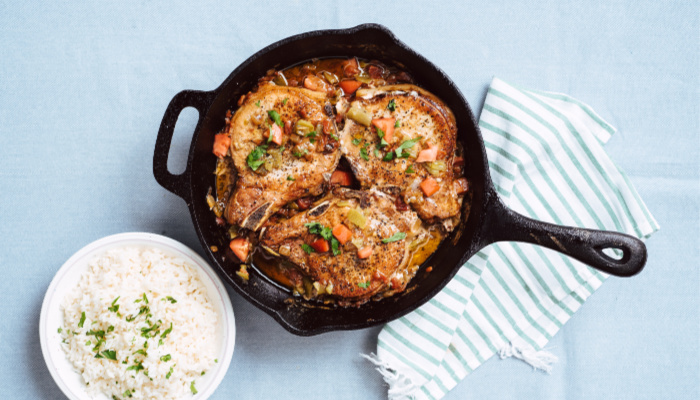shutterstock

Cast iron skillets are one of those kitchen tools that can last for generations. Properly maintained, they’re a cook’s best friend. But unfortunately, it’s really easy to mess up a cast iron skillet if you don’t know what you’re doing.
Seasoning a skillet has nothing to do with adding salt and pepper. It’s the process of baking oil into the iron so that it forms a protective, virtually non-stick barrier. Without proper seasoning, you won’t get good results from your skillet.
You’ll need to season the pan the first time you use it, and then repeat this process occasionally if food seems to be sticking when you cook.
First, wash the skillet with soap and water. Usually cast iron and soapy water are mortal enemies, but this is the exception to the rule. Dry the pan very thoroughly.
Then add about a tablespoon of vegetable oil or melted vegetable shortening. Rub the oil in with a clean cloth or paper towel, making sure to coat the whole pan—including the back and sides.
Now you’re going to bake the cast iron skillet for about an hour at 350 degrees. What this does is open the “pores” of the iron and allow the oil to really soak in, binding it with the structure of the metal. Cool, huh?
After an hour, turn off the oven and let the skillet return to room temperature before taking it out.
The first rule of cleaning a skillet is to never put it in the dishwasher. In fact, you shouldn’t use soap at all. It might seem intimidating, but once you get the hang of it, you’ll find that cleaning cast iron isn’t that much more challenging than any other piece of cookware.
Always clean your skillet right after cooking with it. You definitely don’t want to leave it in the sink to soak, since it will rust. Pour some hot water into the pan and use a brush with nylon or plastic bristles. Metal cleaning tools, such as steel wool, will scrub off the seasoning you worked so hard to achieve.
If there are any stubborn bits of food stuck to the skillet, use kosher salt mixed with a little water as an abrasive. You can also try using boiling water to loosen it up.
Once clean, dry the skillet—remember, water plus iron equals rust—and then rub a little bit of vegetable oil on the surface to maintain the seasoning.
The reason a cast iron skillet is the favorite tool of many professional chefs is its ability to get super-hot and stay that way. It’s perfect for searing steak and other meats. You can also cook stir-fry meals quickly and deep-fry chicken or potatoes.
Cast iron can go from the stovetop into the oven, which is why it’s also a great pan for baking cornbread. Or, a personal favorite around here, giant chocolate chip skillet cookies. The iron creates a browned outer crust that’s so delicious.
One final tip: if you think you’re going to bake a lot of sweet treats like cookies, brownies, and cobbler in your pan, it might be wise to get two skillets. You don’t want the flavors of steak and chicken getting into your baked goods, and that’s a risk with cast iron.